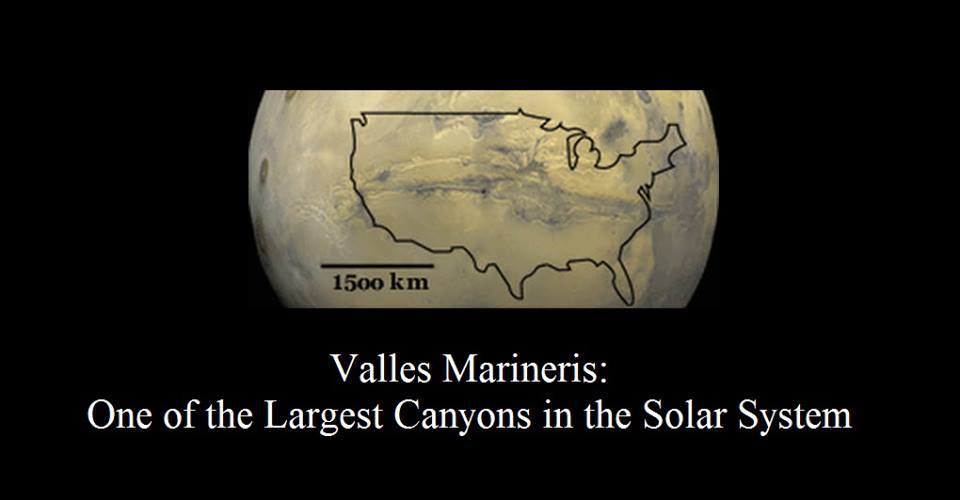
If you’ve been to the Grand Canyon, then you probably know what it’s like to feel rather fleeting and smallish. When you stand next to this vast trench, you see an immense structure that’s been some 70 million years in the making (which is a bit longer than the 7 decades most humans are allotted). The canyon snakes across Northern Arizona, stretching more than 270 miles (434km). At points, the chasm is more than a mile deep (1.5km). However, impressive as the Grand Canyon is, it doesn’t come close to measuring up to Mars’ largest canyon, Valles Marineris.
Just how big is Valles Marineris? This beast is nearly 2,500 miles long and 4 miles deep (4,000 km long and 7 km deep). If Valles Marineris were laid on the surface of the Earth, it would extend all the way across the United States. In short, it makes the *Grand* Canyon look like the *Bland* Canyon.
Wow. Terrible pun. Moving on…
Today, I would like to talk about what it would be like to spend a day at Valles Marineris. Since the canyon covers nearly 20% the circumference of Mars, I’m afraid that you wouldn’t be able to see all of it in a day. In fact, it would take you more than 41 hours to drive the length of the canyon (that’s assuming that you travel at a constant speed of 60mph [96km], and that you never stop for bathroom breaks or sammiches).
So, where should you spend your 24 hours and what should you do? Well, if you started in the West, you would spend most of the day being hopelessly lost. This portion of the canyon is affectionately called “Noctis Labyrinthus” or “the Labyrinth of Night.” Does the name sound a little terrifying? Because it probably should.
Noctis Labyrinthus is a maze-like system of valleys and canyons. Here, the land is littered with the debris of extensive avalanches and rockslides. You could spend your day wandering over the rocks and picking your way through the massive stream of scattered boulders. However, scientists believe that the twisting valley was partially carved by immense winds, which eroded the dusty terrain and carved the canyon’s jutting features (so consider wearing a super thick windbreaker). Also, since the path is so twisted and strewn with debris, it is entirely possible that finding your way back to your vessel could be problematic. Fortunately, there is an upside. This portion of the Red Planet is a bit warmer than other regions; it comes in at a comfortable –100°F (–70°C). True, it may sound cold, but it is a good 50° warmer than the rest of the planet (small victories, people, small victories).
If getting hopelessly lost in the Labyrinth of Night doesn’t sound like your cup of tea, then you might consider visiting Melas Chasma, the deepest part of Valles Marineris. Melas lies to the East of the canyon system, and it measures a staggering 6.8 miles (11km) deep. For obvious reasons, this area might be one of the most interesting and hospitable places to visit. First, there is the extraordinary depth of the cliffs. Because of canyon’s extreme depth, this location might be the best place to put a manned outpost, as it would have the highest natural air pressure on the planet. Moreover, the layering of material observed by the Mars Global Surveyor camera suggests that Melas may be the site of an ancient subaqueous setting. This means that Melas would be a very attractive spot to search for evidence of ancient habitable environments on Mars. So you could spend your day looking for ancient riverbeds or evidence of sedimentary rocks. Who knows, as you spend your day roaming about Melas, you might even find a Martian fossil!
(but probably not)
If neither of these locations sound like appealing sites for a daytrip, then you could do away with Valles Marineris entirely and take a jaunt to another one of Mars’ most impressive features: Olympus Mons, the largest volcano in the solar system. However, this feature is so impressive, it really deserves its own post.
So be sure to stay tuned…